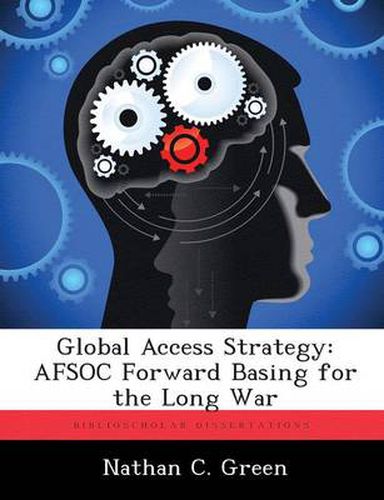Readings Newsletter
Become a Readings Member to make your shopping experience even easier.
Sign in or sign up for free!
You’re not far away from qualifying for FREE standard shipping within Australia
You’ve qualified for FREE standard shipping within Australia
The cart is loading…






This title is printed to order. This book may have been self-published. If so, we cannot guarantee the quality of the content. In the main most books will have gone through the editing process however some may not. We therefore suggest that you be aware of this before ordering this book. If in doubt check either the author or publisher’s details as we are unable to accept any returns unless they are faulty. Please contact us if you have any questions.
This paper addresses changes SOCOM and the Air Force Special Operations Command (AFSOC) need to make in forward basing their aircraft to support the Long War on global terrorism. It pieces together the ideas of the Department of Defense’s Overseas Basing Realignment Strategy, the RAND corporation’s study on how to gain access to basing around the world, Thomas Barnett’s The Pentagon’s New Map, postulating where the US will be involved in the Long War, and SOCOM’s plan for reorganizing AFSOC overseas groups. Three threads weave throughout this study. First, is the need for new AFSOC forward bases around the world that are close to the areas of perceived threat in the Long War. The need for forward basing is driven by the operational need to get as close to the threat as possible in order to provide the quickest, most efficient responses possible. Second, is a need for AFSOC organizational change to meet the new basing requirements. All overseas AFSOC units will return to the US and be reorganized into expeditionary AFSOC groups specifically tailored to each overseas mission. Third, are the criteria that should be considered when determining where to send these newly organized AFSOC groups. Operations, geopolitics, logistics, and cost are the criteria that provide a logical way to examine potential forward bases. A matrix is presented in the chapter five that combines the critical criteria into a visual graph and provides an example of how to weigh each criteria to make crucial forward basing decisions.
$9.00 standard shipping within Australia
FREE standard shipping within Australia for orders over $100.00
Express & International shipping calculated at checkout
This title is printed to order. This book may have been self-published. If so, we cannot guarantee the quality of the content. In the main most books will have gone through the editing process however some may not. We therefore suggest that you be aware of this before ordering this book. If in doubt check either the author or publisher’s details as we are unable to accept any returns unless they are faulty. Please contact us if you have any questions.
This paper addresses changes SOCOM and the Air Force Special Operations Command (AFSOC) need to make in forward basing their aircraft to support the Long War on global terrorism. It pieces together the ideas of the Department of Defense’s Overseas Basing Realignment Strategy, the RAND corporation’s study on how to gain access to basing around the world, Thomas Barnett’s The Pentagon’s New Map, postulating where the US will be involved in the Long War, and SOCOM’s plan for reorganizing AFSOC overseas groups. Three threads weave throughout this study. First, is the need for new AFSOC forward bases around the world that are close to the areas of perceived threat in the Long War. The need for forward basing is driven by the operational need to get as close to the threat as possible in order to provide the quickest, most efficient responses possible. Second, is a need for AFSOC organizational change to meet the new basing requirements. All overseas AFSOC units will return to the US and be reorganized into expeditionary AFSOC groups specifically tailored to each overseas mission. Third, are the criteria that should be considered when determining where to send these newly organized AFSOC groups. Operations, geopolitics, logistics, and cost are the criteria that provide a logical way to examine potential forward bases. A matrix is presented in the chapter five that combines the critical criteria into a visual graph and provides an example of how to weigh each criteria to make crucial forward basing decisions.